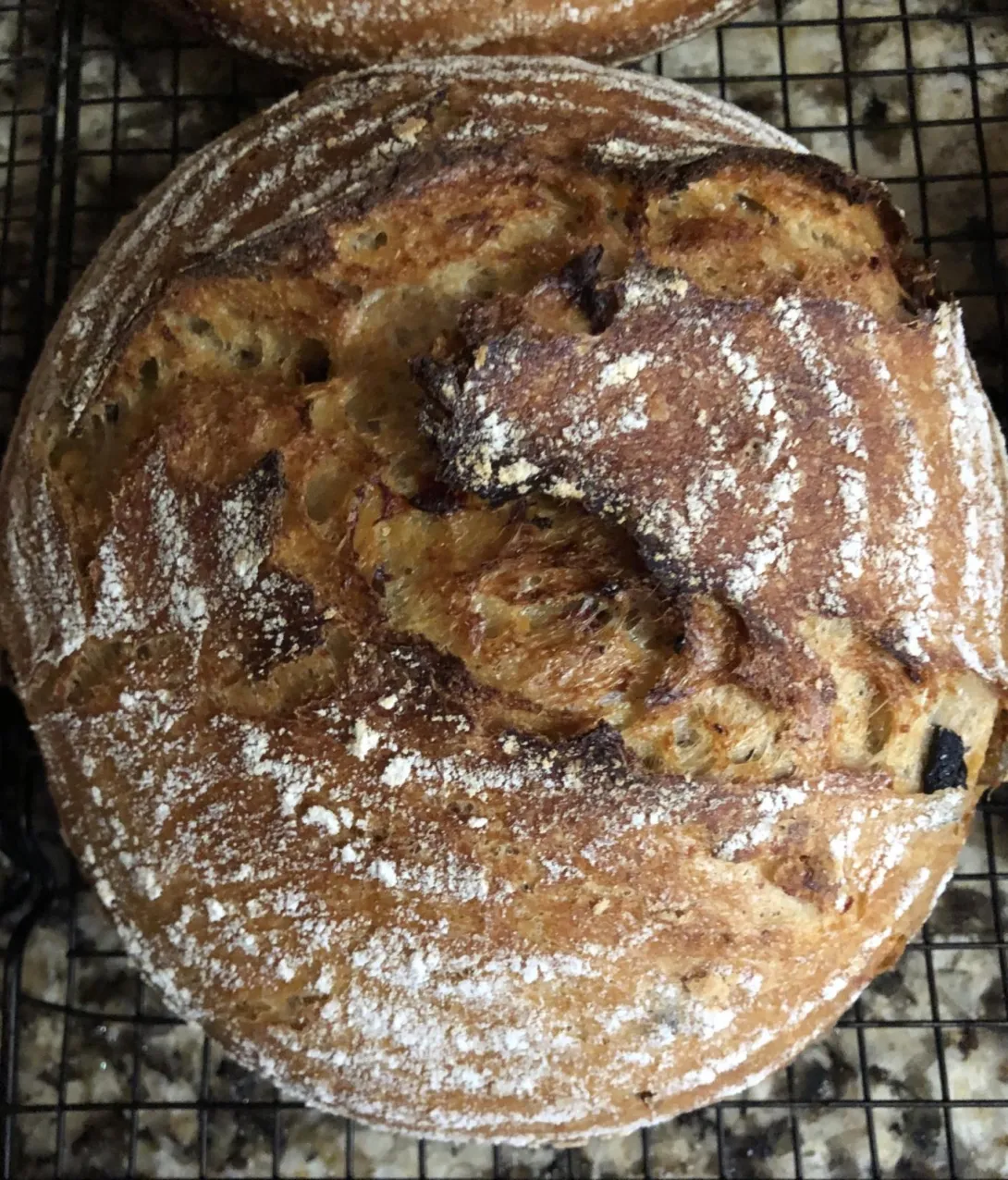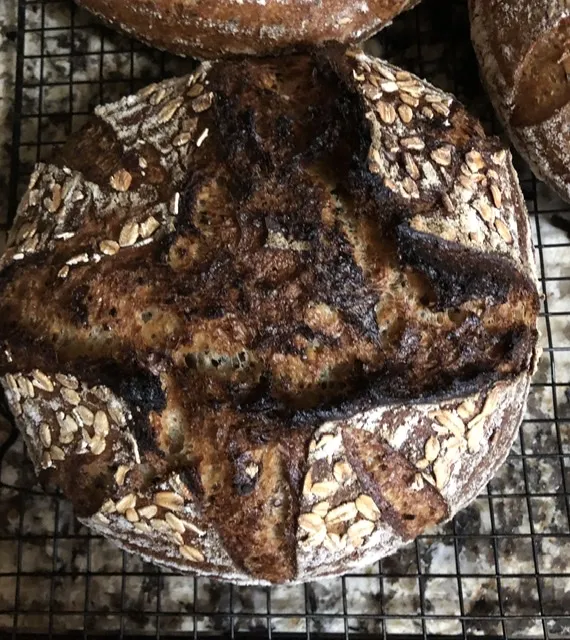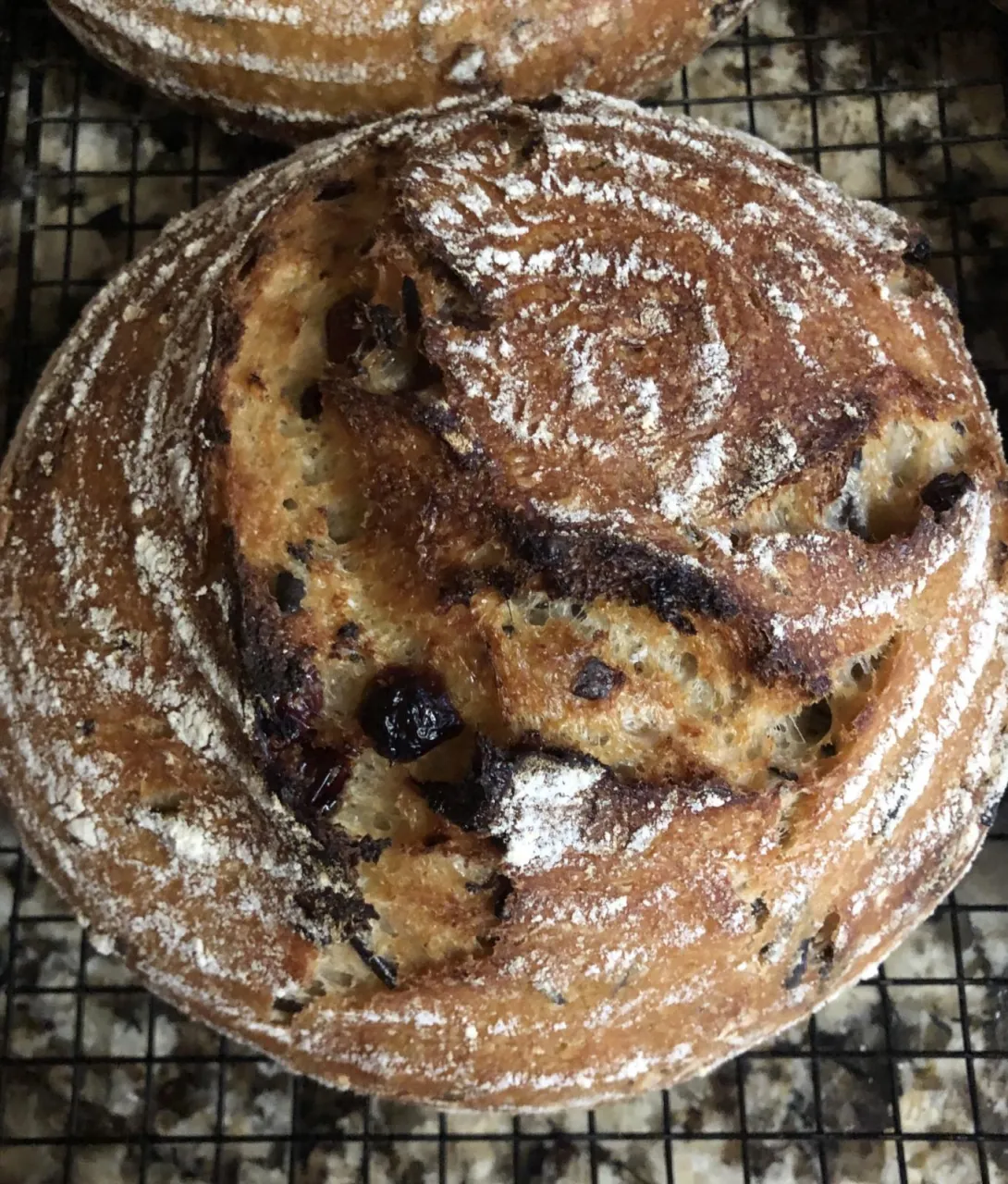Olive and Sweet Pepper Bruschetta Sourdough

Sardo makes this incredible Olive Bruschetta mix as well as a Sweet Pepper Bruschetta. Ever since I tasted them, I’ve been dreaming of putting them into a loaf. So here goes:
Recipe
Makes 3 loaves
Add ins:
150 g Sardo Olive Bruschetta, undrained
100 g Sardo Sweet Pepper Bruschetta, undrained
Main dough:
700 g Strong Bakers Flour
200 g freshly milled Selkirk flour
100 g freshly milled Einkorn flour
700 g filtered water








